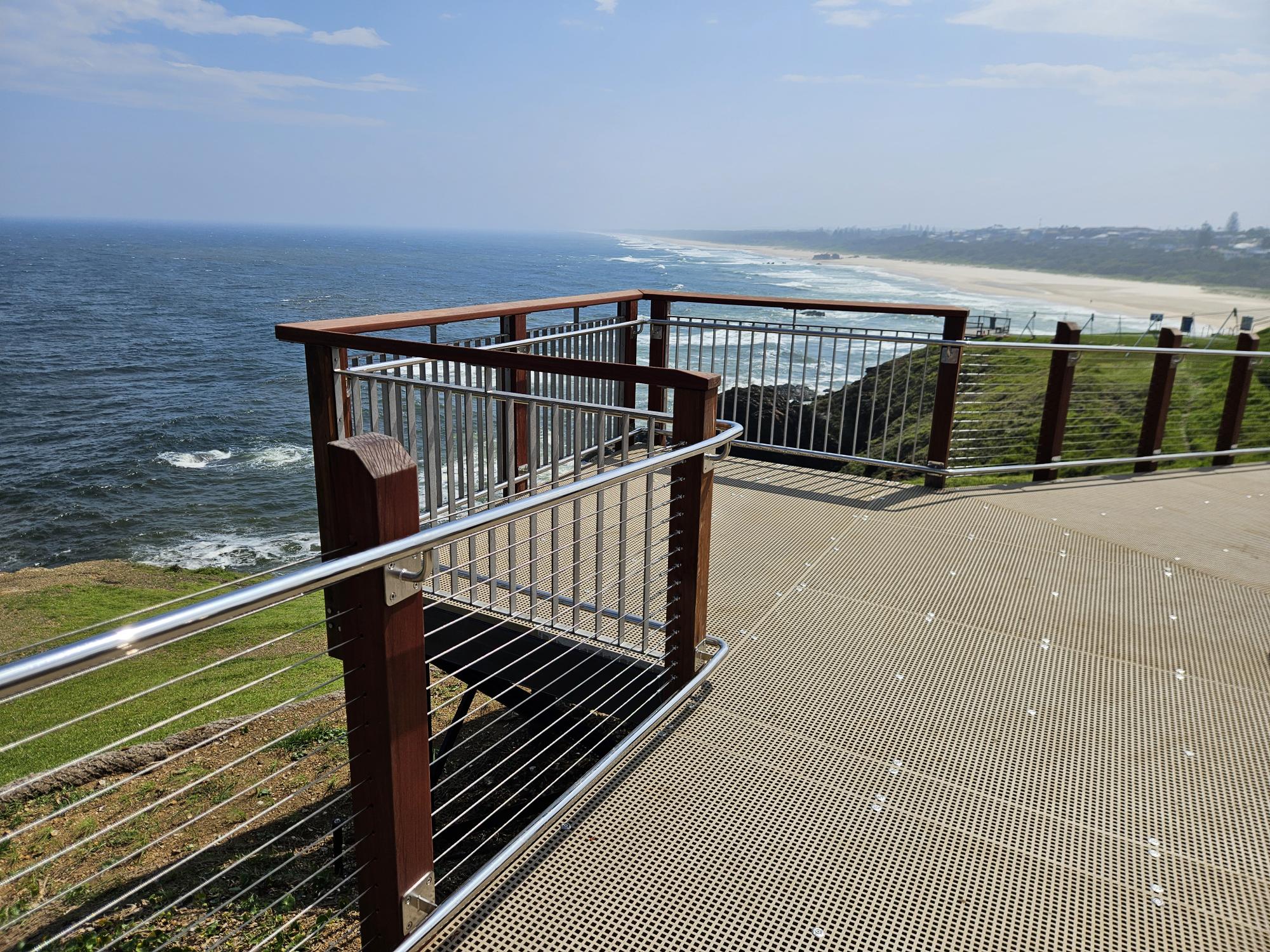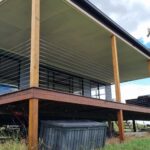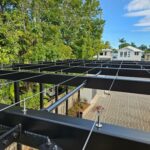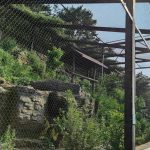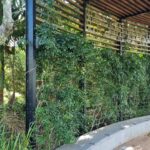When you think of architectural wire, what comes to mind? Balustrades? Safety rails? Truth is that’s only the beginning, and it’s time to think bigger. While essential for safety, wire’s true potential is unleashed in tensile architecture – a design approach that uses tension to create features that are impossibly light, visually striking, and incredibly strong. Forget simple barriers; let’s explore how tensioned steel is redefining what’s possible in modern design.
1. Catenary Lighting: Weave a Ceiling of Light
Large open areas like public plazas, laneways, or commercial atriums present a unique lighting challenge. Traditional pole lighting can create clutter and uneven light, while lighting from surrounding buildings is often insufficient. This is where catenary lighting systems, suspended on a web of high-tensile stainless steel wires, offer a perfect solution.
These systems create a ceiling of light that floats above a space, providing brilliant, uniform illumination without a single ground-level obstruction. The elegant, suspended grid of wires adds its own architectural character during the day and transforms the space at night. It is a functional and beautiful way to make large public areas feel safer and more intimate.
“Specialised wire systems give us the freedom to create visual impact with minimal structure. We can span vast areas and create effects that would be impossible with traditional materials.”
– Bruno Archer | Jasbem
2. Architectural Screening: Define Spaces, Don’t Divide Them
Modern interior design often calls for the division of space without sacrificing an open, airy feel. Traditional partitions block light and sightlines, but woven architectural wire mesh offers a sophisticated alternative. Used as an architectural screening element, the mesh creates a sense of separation and privacy while allowing light and air to pass through freely.
Whether used as a full-height partition in a corporate office, a decorative feature in a restaurant, or a safety screen in a stairwell, stainless steel mesh provides texture and a modern industrial aesthetic. It is a highly versatile tool for layering spaces, offering a functional division that enhances, rather than encloses, an interior.
3. Green Facades: An Invisible Structure for Living Art
As discussed in two previous posts, green facades are a cornerstone of sustainable design. The success of these vertical gardens hinges on providing a support structure that is both incredibly strong and visually discreet. Tensile wire systems are the ideal solution. They provide a minimalist, almost invisible grid that forms the backbone for lush living walls, allowing the vibrant foliage to be the hero. This application perfectly merges biophilic design principles with modern tensile architecture.
The true potential of stainless steel wire is unlocked when it is viewed not just as a safety component, but as a primary design material. These applications demonstrate how the principles of tensile architecture can solve complex design challenges in a way that is both elegant and structurally sound.
Have a unique design challenge? Contact the Jasbem team to explore the possibilities of custom tensile architecture.
Contact Us Today